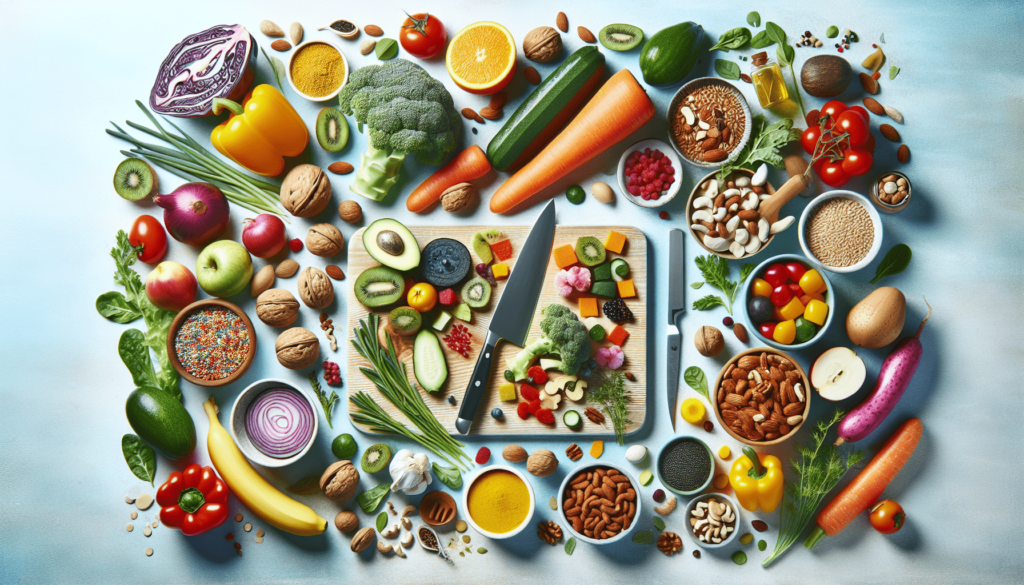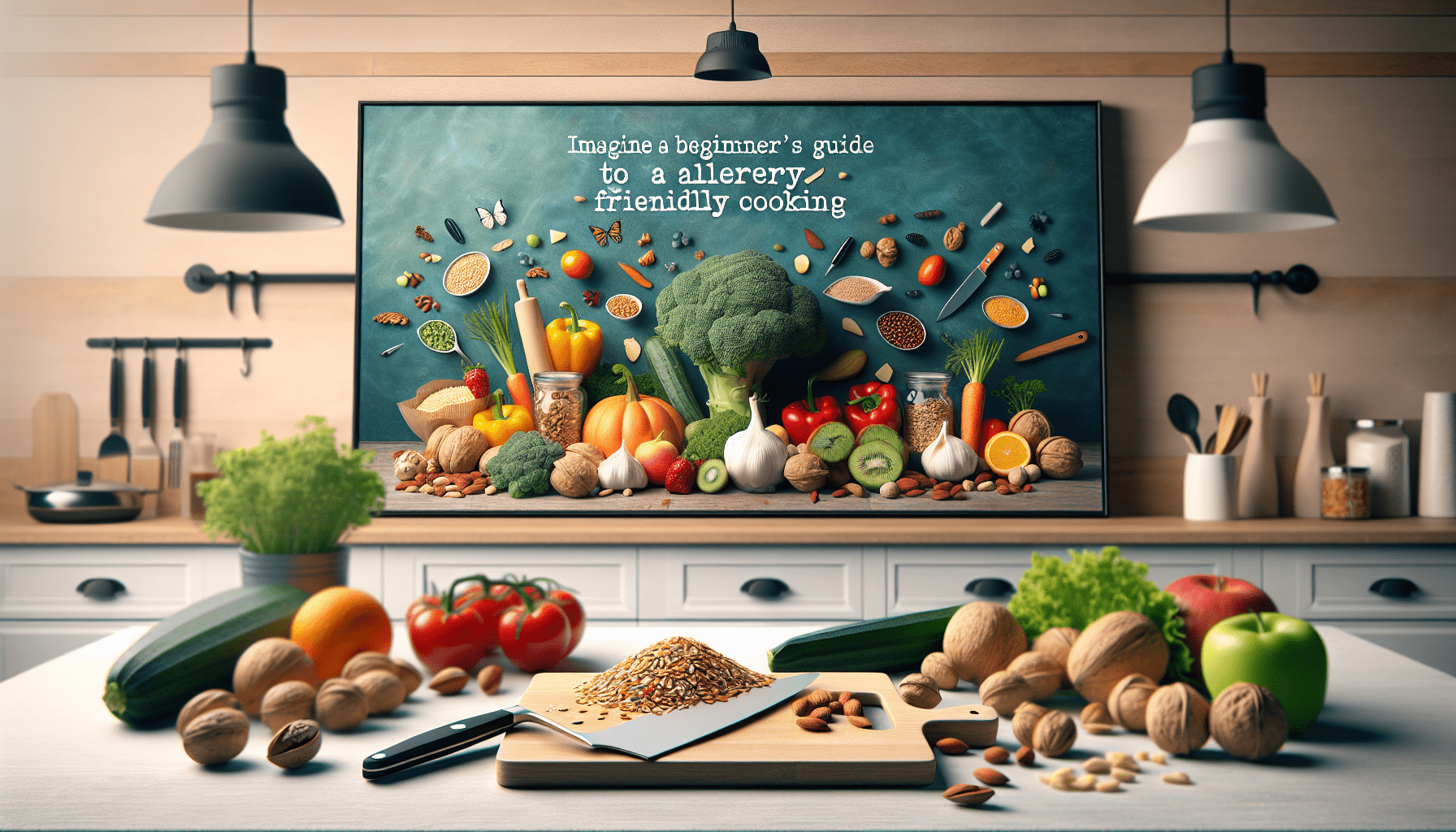Have you ever wondered how to make delicious meals that are also safe for those with allergies? Cooking for individuals with food allergies might seem daunting at first, but with the right tips and techniques, it can become a seamless part of your culinary routine. In this guide, you’ll learn everything you need to know about allergy-friendly cooking, making it perfect for beginners and anyone looking to ensure their kitchen is safe and inclusive.
Understanding Food Allergies
What Are Food Allergies?
Food allergies are adverse immune responses triggered by specific foods. When someone with a food allergy consumes even a small amount of the allergen, their immune system mistakenly identifies it as harmful and reacts against it. These reactions can range from mild symptoms like itching and hives to severe and potentially life-threatening conditions like anaphylaxis.
Common Food Allergens
The most common food allergens, often referred to as the “big eight,” account for around 90% of all food allergy reactions. These include:
| Allergen | Common Foods Containing Allergen |
|---|---|
| Milk | Cheese, yogurt, butter, cream |
| Eggs | Baked goods, mayonnaise, pasta |
| Peanuts | Peanut butter, candy, baked goods |
| Tree Nuts | Almonds, walnuts, cashews, pesto |
| Soy | Tofu, soy sauce, some processed foods |
| Wheat | Bread, pasta, cereals, certain sauces |
| Fish | Salmon, tuna, cod, fish sauce |
| Shellfish | Shrimp, crab, lobster, some Asian cuisines |
Awareness of these common allergens is crucial for preparing safe meals.
Preparing Your Kitchen
Cleaning and Avoiding Cross-Contamination
Cross-contamination occurs when allergens are unintentionally transferred from one food or surface to another. Here are some steps to prevent it:
- Clean surfaces and utensils thoroughly: Use hot, soapy water or a dishwasher to clean dishes, cutting boards, and utensils.
- Designate specific tools: Have separate cutting boards, knives, and utensils for allergen-free cooking.
- Label containers: Keep allergen-free ingredients in clearly marked containers to avoid confusion.
Stocking Your Pantry with Allergy-Friendly Ingredients
To make allergy-friendly cooking easier, it’s helpful to stock your pantry with safe ingredients. Here are some staples:
| Ingredient | Alternatives for Common Allergens |
|---|---|
| Flour | Gluten-free flour, almond flour |
| Milk | Almond milk, oat milk, rice milk |
| Butter | Coconut oil, margarine |
| Eggs | Applesauce, flaxseeds, chia seeds |
| Soy Sauce | Tamari, coconut aminos |
| Peanut Butter | Sunflower seed butter, almond butter |
These alternatives can replace common allergens, allowing you to adapt recipes to be safe for everyone.

Substituting Ingredients
Dairy-Free Alternatives
Many recipes call for dairy products, which can be problematic for those with milk allergies. Here’s how you can substitute them:
- Milk: Use almond milk, soy milk, or oat milk in the same proportions.
- Butter: Coconut oil, margarine, or vegan butter spreads work well in most recipes.
- Cheese: Nutritional yeast can give a cheesy flavor to dishes without dairy.
Egg Substitutes
Eggs are versatile in baking and cooking, but several alternatives can mimic their properties. Some options include:
- Flaxseed Meal: Mix 1 tablespoon of ground flaxseed with 3 tablespoons of water to replace one egg.
- Chia Seeds: Similar to flaxseed, mix 1 tablespoon of chia seeds with 3 tablespoons of water.
- Applesauce: Use 1/4 cup of unsweetened applesauce per egg in baking recipes.
Nut-Free Cooking
When cooking for someone with nut allergies, consider these substitutes:
- Peanut Butter: Use sunflower seed butter or soy butter.
- Almond Flour: Try coconut flour or oat flour as a replacement.
- Pesto: Make pesto with pumpkin seeds or sunflower seeds instead of nuts.
Allergy-Friendly Meal Ideas
Breakfast Options
Starting the day with a nutritious, allergy-friendly meal sets the tone for success. Here are some ideas:
- Smoothie Bowls: Use a base of banana, spinach, and almond milk, and top with fruits and seeds.
- Oatmeal: Cook gluten-free oats with a dairy-free milk and top with fresh berries and a drizzle of honey.
- Pancakes: Make gluten-free, egg-free pancakes by using gluten-free flour and a flaxseed egg substitute.
Lunch Recipes
Lunchtime can be challenging, but these recipes are both safe and delicious:
- Quinoa Salad: Toss cooked quinoa with chopped vegetables, beans, and a lemon vinaigrette.
- Turkey Wrap: Use a gluten-free wrap or lettuce to encase turkey slices, avocado, and fresh veggies.
- Veggie Soup: A hearty vegetable soup made with a base of vegetable broth and a variety of fresh, seasonal vegetables.
Dinner Dishes
Dinner is often the main event of the day. Here are some allergy-friendly options:
- Stuffed Bell Peppers: Fill bell peppers with a mixture of quinoa, black beans, corn, and spices, then bake until tender.
- Stir-Fry: Sauté chicken, tofu, or shrimp with an assortment of vegetables and a sauce made from tamari and fresh ginger.
- Gluten-Free Pasta: Serve gluten-free pasta with a homemade tomato sauce or pesto made from sunflower seeds.
Snacks and Desserts
No meal plan is complete without snacks and desserts. Here are some allergy-friendly treats:
- Energy Balls: Blend oats, sunflower seed butter, honey, and dried fruit, then roll into bite-sized balls.
- Fruit Salad: A mix of fresh, seasonal fruits with a squeeze of lime juice makes for a refreshing snack.
- Avocado Chocolate Mousse: Blend ripe avocados with cocoa powder and a sweetener for a creamy, dairy-free chocolate treat.

Reading Food Labels
Ingredients to Watch Out For
When shopping for allergy-friendly ingredients, reading food labels is essential. Watch out for hidden allergens such as:
- Casein (found in dairy)
- Whey (found in dairy)
- Albumin (found in eggs)
- Hydrolyzed vegetable protein (may contain soy or wheat)
Understanding Allergen Statements
Many packaged foods include allergen statements like “may contain traces of…” or “produced in a facility that processes…”. These warnings can help you avoid cross-contaminated foods. Always choose products from dedicated allergen-free facilities when possible.
Eating Out with Food Allergies
Communicating Your Needs
Dining out with food allergies requires clear communication. Here’s how you can ensure a safe experience:
- Call Ahead: Inform the restaurant of your allergies and ask how they handle allergen-free orders.
- Speak to Your Server: Clearly state your allergies when ordering, and confirm that the kitchen can accommodate your needs.
- Use Allergy Cards: Hand a card with your specific allergies to your server to avoid any misunderstandings.
Safer Cuisine Choices
Certain cuisines may be more accommodating to food allergies. For example:
- Mediterranean: Often features dishes rich in fruits, vegetables, lean proteins, and olive oil.
- Japanese: Many sushi restaurants can create rolls without common allergens like gluten or dairy.
- Mexican: Focus on corn-based dishes and naturally gluten-free options like beans, rice, and fresh salsa.
Handling Allergy Emergencies
Recognizing Symptoms
Even with careful planning, accidents can happen. Knowing the symptoms of an allergic reaction can save lives. Symptoms include:
- Hives or rash
- Swelling of lips, tongue, or face
- Difficulty breathing
- Dizziness or fainting
- Stomach pain, vomiting, or diarrhea
Using an EpiPen
If someone is experiencing a severe allergic reaction (anaphylaxis), using an EpiPen (epinephrine injector) promptly can be life-saving. Follow these steps:
- Remove the safety cap.
- Hold the injector firmly, and press the tip against the outer thigh.
- Hold for several seconds and then remove.
- Seek emergency medical attention immediately.
Emergency Contact Information
Always have emergency contact information readily available. This includes:
- Doctor’s name and number
- Nearest hospital or urgent care center
- Emergency contact person
Supporting Kids with Food Allergies
School Lunches
Packing school lunches for a child with food allergies can be a unique challenge. Consider these tips:
- Simple Meals: Stick to simple, tasty meals like sandwiches with allergen-free bread and sunflower seed butter, fresh fruit, and cut-up vegetables.
- Allergy-Free Treats: Include fun, allergy-safe snacks like gluten-free cookies or fruit leathers.
- Label Everything: Clearly label your child’s lunchbox to avoid mix-ups.
Teaching Kids About Allergies
Empower your children by teaching them about their allergies. Discuss safe and unsafe foods, how to read labels, and the importance of not sharing food with classmates. Make sure they know how to communicate their needs to teachers and friends.
Educating Others
Often, parents of non-allergic children are unaware of the dangers of food allergies. Host informational sessions or create informational flyers to educate them about food allergies and promote a safe environment for everyone.
Conclusion
Creating an inclusive, allergy-friendly kitchen doesn’t have to be overwhelming. By understanding the basics of food allergies, substituting safe ingredients, and communicating effectively, you can make delicious meals that everyone can enjoy. Remember, the key is to plan, prepare, and stay informed, ensuring that your kitchen remains a safe space for all. Happy cooking!
